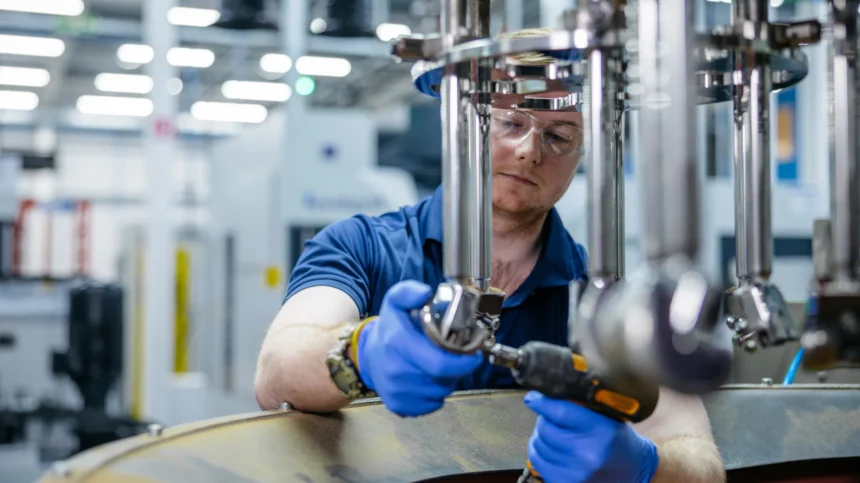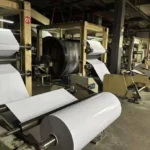Introduction: The Future of Orthopedic Implants
Orthopedic implants have come a long way, providing life-changing solutions for millions of patients worldwide. These medical devices help replace or support damaged bones, joints, and other structures in the musculoskeletal system. As technology advances, the next generation of orthopedic implants promises even greater outcomes. This article explores the cutting-edge innovations shaping the future of Orthopedic implants manufacturer, from advanced materials to 3D printing, and how these developments are improving patient care.
Advanced Materials for Stronger and More Durable Implants
The materials used in orthopedic implants play a crucial role in their performance and longevity. Over the years, advancements in materials science have led to stronger, more durable, and biocompatible implants. For example, titanium alloys, ceramics, and cobalt-chromium alloys are now common materials used in joint replacement surgeries.
The next generation of materials aims to enhance the durability and reduce complications such as wear and corrosion. For instance, new ceramic composites are being developed to mimic the strength and flexibility of natural bone, reducing the risk of implant failure. These materials not only improve the implant’s lifespan but also enhance patient comfort and recovery time.
3D Printing: Customization for Better Fit and Function
One of the most exciting developments in the field of orthopedic implants is the use of 3D printing. This technology allows for the creation of personalized implants that fit the unique anatomy of each patient. By using advanced imaging techniques such as CT scans or MRIs, doctors can design implants tailored to the specific needs of the patient, improving the fit, function, and overall outcome of the surgery.
The use of 3D printing in orthopedic implants also enables the creation of complex geometries that would be difficult or impossible to achieve with traditional manufacturing methods. This opens up the possibility for more precise and functional implants that can adapt to the patient’s body more effectively. The potential for 3D printing to reduce the need for revision surgeries is another major benefit of this technology.
Personalized Orthopedic Implants: Tailored Solutions for Patients
Personalized orthopedic implants are designed to cater to the individual needs of each patient. Rather than relying on generic, off-the-shelf solutions, personalized implants are custom-made based on a patient’s anatomy and medical history. This approach not only improves the accuracy of the implant but also helps reduce the risk of complications and discomfort post-surgery.
In addition to improving patient outcomes, personalized implants also enable more efficient surgeries. Surgeons can plan and rehearse procedures using 3D models of the patient’s anatomy, ensuring a more precise and faster operation. This personalized approach is particularly beneficial for patients with complex conditions or those who have experienced implant failures in the past.
Bioactive Coatings: Enhancing Bone Growth and Integration
One of the biggest challenges with orthopedic implants is ensuring that they integrate properly with the surrounding bone tissue. Traditional implants often rely on the body’s natural healing process, which can take time and may not always result in successful integration. To address this, researchers are developing bioactive coatings that promote bone growth and enhance the bond between the implant and the bone.
These coatings are made from materials that encourage the formation of new bone tissue, allowing the implant to fuse more securely with the bone. Bioactive coatings have the potential to speed up the healing process and improve the long-term success of the implant. As these coatings become more advanced, they may also be able to deliver therapeutic agents, such as antibiotics or growth factors, to the implant site, further enhancing the healing process.
Robotics and Artificial Intelligence: Revolutionizing Implant Surgery
In addition to advancements in implant materials, robotics and artificial intelligence (AI) are also playing a significant role in the future of orthopedic implants. Robotic-assisted surgery allows for greater precision and control during the procedure, leading to improved outcomes and faster recovery times.
AI is being used to assist surgeons in planning and executing complex surgeries. By analyzing large amounts of patient data, AI algorithms can help identify the best approach for each individual, taking into account factors such as the patient’s anatomy, medical history, and lifestyle. This personalized approach helps ensure that the most suitable implant is selected and that the surgery is performed as efficiently as possible.
Minimally Invasive Procedures: Faster Recovery and Less Pain
The shift toward minimally invasive procedures is another trend that is transforming orthopedic implants. Traditional surgeries often require large incisions, leading to longer recovery times, more pain, and a higher risk of complications. Minimally invasive techniques, on the other hand, involve smaller incisions and use specialized instruments to perform the surgery with greater precision.
With the help of advanced imaging and robotic systems, surgeons can now perform implant surgeries through smaller incisions, reducing tissue damage and accelerating the healing process. Patients benefit from shorter hospital stays, less pain, and a quicker return to normal activities. As technology continues to improve, minimally invasive procedures are expected to become the standard for orthopedic implant surgeries.
Smart Implants: Monitoring and Improving Patient Outcomes
The next generation of orthopedic implants is not just about better materials and customization. It’s also about integrating technology into the implants themselves. Smart implants are equipped with sensors that can monitor various factors such as temperature, pressure, and motion. These sensors provide valuable data to both patients and healthcare providers, allowing for real-time monitoring of the implant’s performance.
For example, smart implants can alert doctors to early signs of implant failure, infection, or other complications, allowing for timely interventions. This technology has the potential to significantly improve patient outcomes by providing continuous feedback and enabling more personalized care. Additionally, smart implants may be able to communicate with other wearable devices, such as fitness trackers, to provide a comprehensive picture of the patient’s health and recovery progress.
Overcoming Challenges: Cost and Accessibility
While the next generation of orthopedic implants promises great advancements, there are challenges that need to be addressed. One of the biggest hurdles is the cost of these innovative technologies. Personalized implants, 3D printing, and smart devices all come at a premium price, which may not be affordable for all patients. Additionally, the availability of these advanced implants may be limited in certain regions or healthcare systems.
To make these innovations accessible to a broader population, it is important to focus on reducing production costs, increasing competition among manufacturers, and improving the efficiency of healthcare systems. As demand for advanced orthopedic implants grows, economies of scale may help reduce costs, making these technologies more accessible to patients around the world.
Conclusion: A Bright Future for Orthopedic Implants
The future of orthopedic implants is bright, with new technologies and innovations set to improve patient care and outcomes. From advanced materials to personalized designs, 3D printing, and smart implants, the next generation of orthopedic implants is changing the way we approach musculoskeletal health. As these technologies continue to evolve, they offer the promise of more effective, durable, and personalized solutions for patients, ultimately leading to better outcomes and a higher quality of life.
The future of orthopedic implants is not just about better technology—it’s about improving the patient experience and making life-changing treatments more accessible to everyone. With ongoing research and development, the next generation of aerospace fasteners manufacturer holds the potential to revolutionize the field and transform the lives of patients worldwide.



